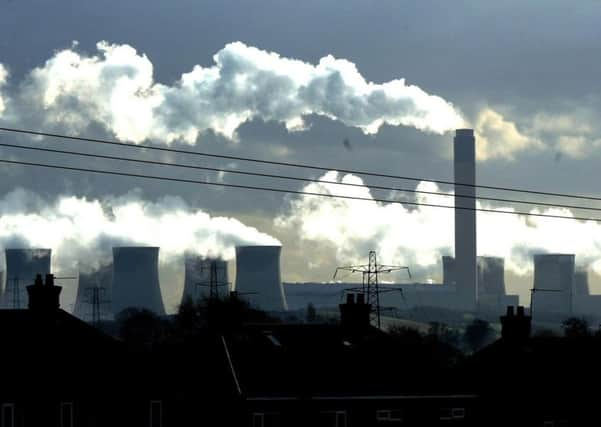Ilona Amos: Holyrood and Westminster must work together on energy


The SNP government has in turn been praised for setting the world’s most ambitious climate plan, aiming to reduce the amount of greenhouse gases pumped into the atmosphere by 42 per cent from the 1990 level, and come under fire for missing all the interim goals.
So recent news that a 46 per cent cut was achieved by 2014 and that our carbon dioxide reductions are among the highest in Western Europe is heartening. And now the First Minister has pledged to raise the bar even higher, with a tougher target due to be set out in legislation shortly.
Advertisement
Hide AdAdvertisement
Hide AdSo far, so good. But there is no time to be complacent. Experts have warned that the planet is already on track to warm way beyond the “safe” level of 2C above pre-industrial levels that scientists believe would avoid climate catastrophe. So what can we do?
Decarbonising the energy sector is a crucial move. Yes, a major step forward came in March when Fife’s Longannet power station was switched off after 44 years, heralding the end of “dirty” coal power north of the border. However, we still need to increase our focus on renewables.
The latest figures show we are making steady progress in the drive to generate the equivalent of 100 per cent of domestic electricity needs from renewable sources by 2020. Renewables provided 57.4 per cent of electricity generation in Scotland last year, with hydro power contributing more than a quarter of that.
But a key criticism of renewables is intermittency of supply, with power-generating potential lying in the lap of the gods. When the wind doesn’t blow or the sun goes abroad for a few weeks, as it often does, we could be left sitting in the dark unable to boil the kettle.
Scientists around the world are working hard on possible solutions, with all sorts of research into areas such as new-generation batteries. But we already possess tried and tested technology that has the potential to play a huge role in safeguarding our future energy security – hydro electric pumped storage. The technique involves using electricity to pump water from a loch to an upper reservoir during times of low power demand, allowing it to be released to generate power in high demand periods.
The UK is home to just four such schemes, two of them in Scotland – at the landmark Ben Cruachan power station, on the shores of Loch Awe, and at Foyers, overlooking Loch Ness. And plans have already been set out to increase provision, with the Coire Glas development near Invergarry receiving consent nearly three years ago and proposals to more than double capacity at Ben Cruachan being explored. A proposed development at Glenmuckloch opencast mine in Dumfries and Galloway is also awaiting the green light.
Experts claim it is the only electricity storage method currently capable of operating at a commercial scale. So why is nothing happening? The main barriers are cash. Investors are being put off by a lack of clarity with regard to policy and regulation, according to industry body Scottish Renewables.
Scottish energy minister Paul Wheelhouse is today visiting Foyers to highlight the huge potential of the technology. Let’s hope he can persuade his Westminster counterparts to end the ongoing uncertainty over renewables development and seize this opportunity to benefit the planet and our economy to the estimated tune of more than £1 billion.